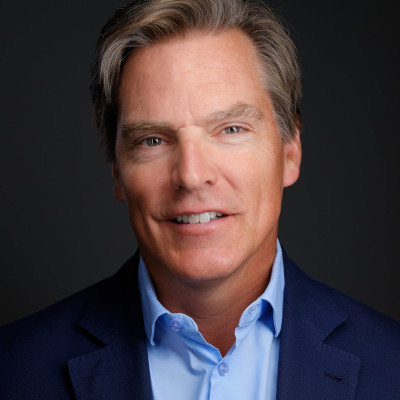The stewardship of long-horizon foundation assets has more in common with family office management than many might realize. Foundations typically operate with formal structures—clear mandates, documented policies and quarterly meetings—that family offices, too, might benefit from adopting.

As I prepared a Q2 2025 foundation board agenda recently, I realized that many of the discussion topics would be equally valuable to my family office clients and to SFO and MFO leaders.
Here is a non-exhaustive list of the current themes, drawn from years of experience, that might serve as both a checklist and a catalyst for your own discussions about investment governance.
Private equity
It’s a staple asset class for most foundations and families. However, PE investing isn’t as simple as one manager and one fund. Rather it is more likely a program with one or more managers and one or more funds, which over time will mature and need to be replaced.
Maintaining consistent exposure requires early commitment to new funds and thoughtful pacing to balance strategy, risk and liquidity. The plan may include secondary PE funds to complement the primary funds and to manage the J-curve effect.
It is the responsibility of the foundation board to establish an appropriate and ongoing PE program, even if the daily practitioners are responsible for the associated due diligence and decision making.
Fixed income
Fixed income remains one of the most underappreciated—and, indeed, misunderstood—asset classes among retail investors, foundations and family offices. Despite some disappointing returns over the past decade, its role in portfolio construction and performance is still essential.
In my work with foundations and family offices, the approach to fixed income has probably evolved more than other major asset classes. Some foundations have moved to more global fixed income, some have decreased exposure to almost nothing as rates dropped, and others have reshaped both their approved list and current fixed-income allocations.
Our current meeting features four fixed-income topics for discussion:
- Pure exposure to high-quality credit distinct from interest rate risk.
- Replacing the ineffective yield from traditional fixed-income funds and indices.
- The right exposure to mortgages with sufficient yield.
- Where to find value and good credit quality in the expanding private debt space with an acceptable risk profile.
Tactical asset allocation
Tactical asset allocation (TAA) gives managers the flexibility to adjust exposure in volatile markets, and these shifts can significantly affect resilience and returns. TAA is distinct from the natural moves by the managers of distinct fund investments.
Our board agenda discussion on this topic is focused on how much latitude to allow in the TAA mandate, and how to measure effectiveness. Our group believes in active management for most exposures, and this is an important part of that thesis, but it’s also important to get right.
Statement of Investment Policies (SIP)
An effective SIP improves everything. A review and update of our SIP isn’t on our current agenda, but we completed it recently and it feels worth mentioning here.
In short, if the people charged with overseeing the investment of a foundation’s or family’s assets are not the authors of the SIP, then they’re simplycarrying out someone else’s plan, rather than one they helped shape and believe in. Higher conviction and more commitment from the decision makers will likely accompany their ownership of the plan.
Personnel and institutional knowledge
This is the regular review of the human resources needed to steer an effective board. It’s also a consideration of the skill sets that will be needed in the future for effective asset management, including legal, investment experience and accounting, and the ongoing effort to recruit those skills over time. Like some investments, future people management can have a long lead time.
Also, whether it’s for a foundation or a family office, this serves as a reminder of the importance of purposeful maintenance of institutional knowledge that’s inherent in a well-formed foundation, including information about purpose, priorities, exclusions, voting and target return. This kind of information can be lost with the turnover of membership.
Conflicts of interest
The proper management of conflicts fosters trust, transparency and ultimately better decision making. It is also good governance. Asking members to report potential conflicts is a simple but powerful action, one that can prevent costly or embarrassing issues from surfacing. Further, this simple habit may reveal competing priorities or imperfect due diligence that is not otherwise apparent.
Benchmarks
Benchmarks matter, but they should serve the mission, not override it. They’re tools, not truths.
Some mandates appropriately have a “best” benchmark that may not be perfect but is effective. CPI+XX% may be an example of this, possibly for real estate or infrastructure. Benchmarks for absolute return-focused funds that don’t have a strict benchmark are still important. We are fans of absolute return mandates, especially in our fixed-income investments, and we have found comfort in benchmarks as reasonable gauges rather than hard and fast “beats versus misses.”
A short-term government bond index might be an example of this generic guidepost, potentially including an expectation of a certain outperformance versus that index. We are completing our annual benchmark review.
Target return for the total portfolio
We are finalizing a project that reconsiders and formalizes our approach to setting average annual expected target return for the total portfolio. This is the return that we believe we can and shouldwork toward, as an average per year over a 10-year period, recognizing the inevitable volatility of returns.
This has been an important exercise for us because it forced us to revisit the purpose of our expected returns, rather than something as simple as “earn as much as possible within prudent risk parameters.” It included the “costs” that we need to cover, such as annual disbursements, service fees, investment management fees, an appropriate inflation amount, and a desire to achieve some growth. It caused us to consider what returns might be possible, and what similar pools of investible funds have earned recently and their targets.
The outcome of this project will be organized into an official working document as part of our statement of investment policies, and it will form the basis of asset allocation. Importantly, it is intended to live on past the current slate of board members, meant in part to explain previous year’s returns, good and bad, and to ideally reinforce a consistent philosophy over time.
Final thoughts
Apparently, “a goal without a plan is just a wish,” and these important investments deserve better. Whether you’re stewarding philanthropic capital or managing generational wealth, a disciplined, agenda-driven approach pays dividends—not just in returns but in clarity, confidence and continuity.
These themes are drawn from real boardroom experience, from a topic I find both important and rewarding. I hope they offer a useful framework as you refine your own investment governance.
Kevin Foley is a Managing Director, Institutional Accounts, at YTM Capital in Oakville, Ont. Established in 2010, YTM is a Canadian asset manager that employs credit and mortgage strategies as alternatives to traditional fixed income and manages investments for individuals, families and institutional investors. Contact Kevin at Kevin.Foley@YTMCapital.com.
The Canadian Family Offices newsletter comes out on Sundays and Wednesdays. If you are interested in stories about Canadian enterprising families, family offices and the professionals who work with them, but like your content aggregated, you can sign up for our free newsletter here.
Please visit here to see information about our standards of journalistic excellence.




